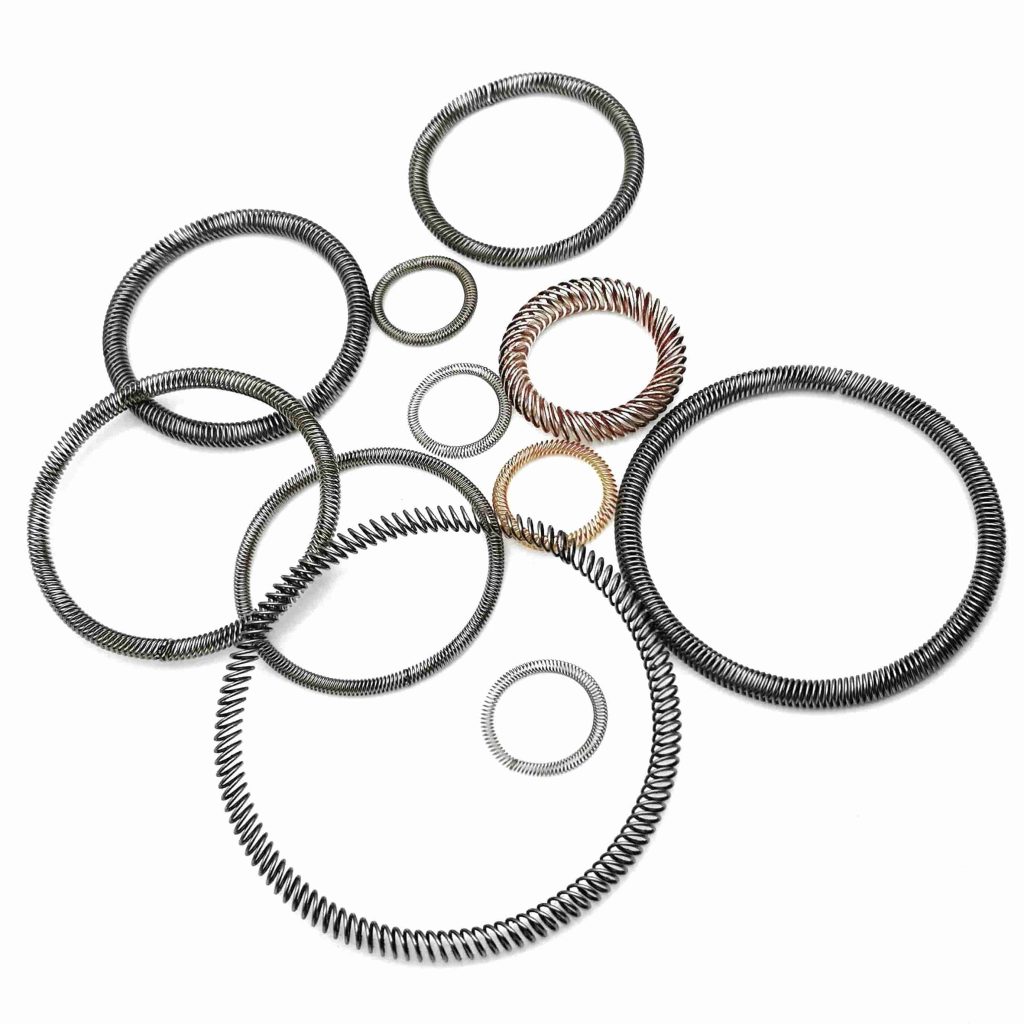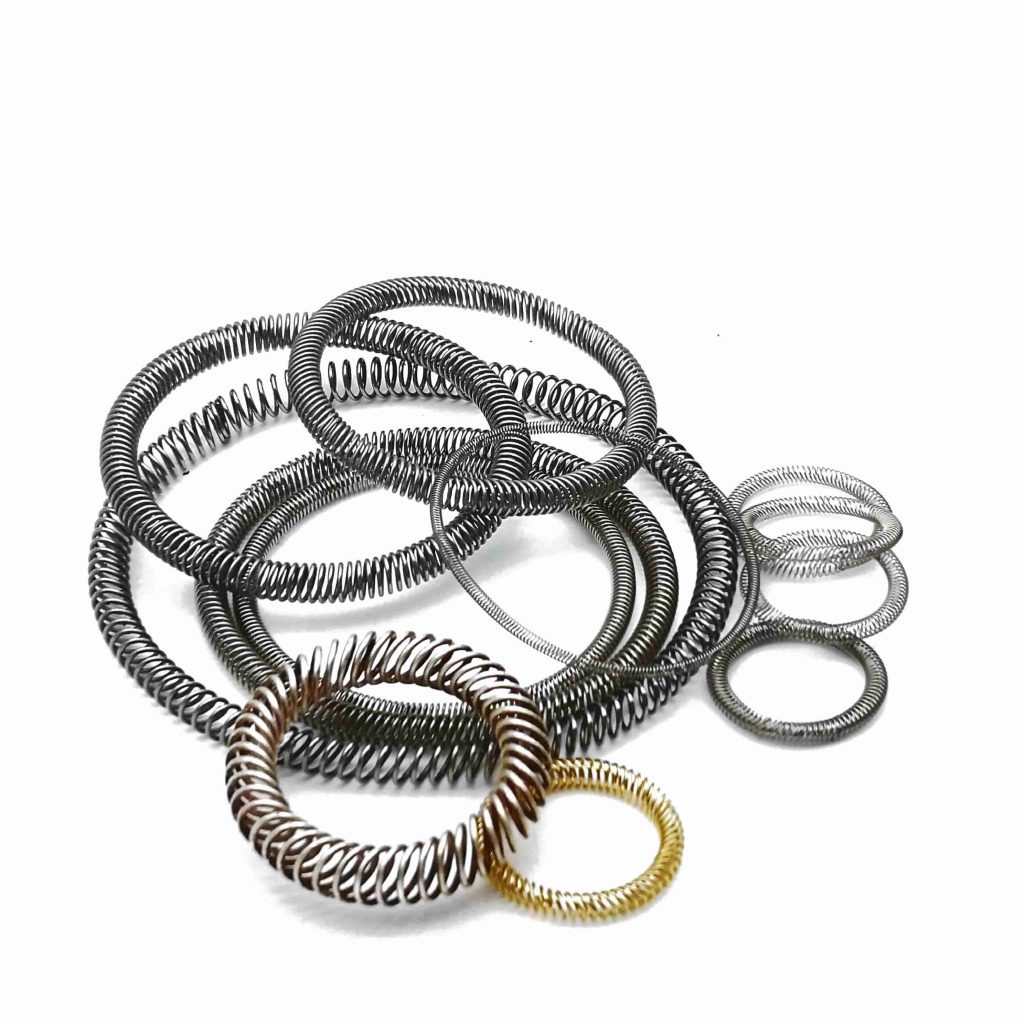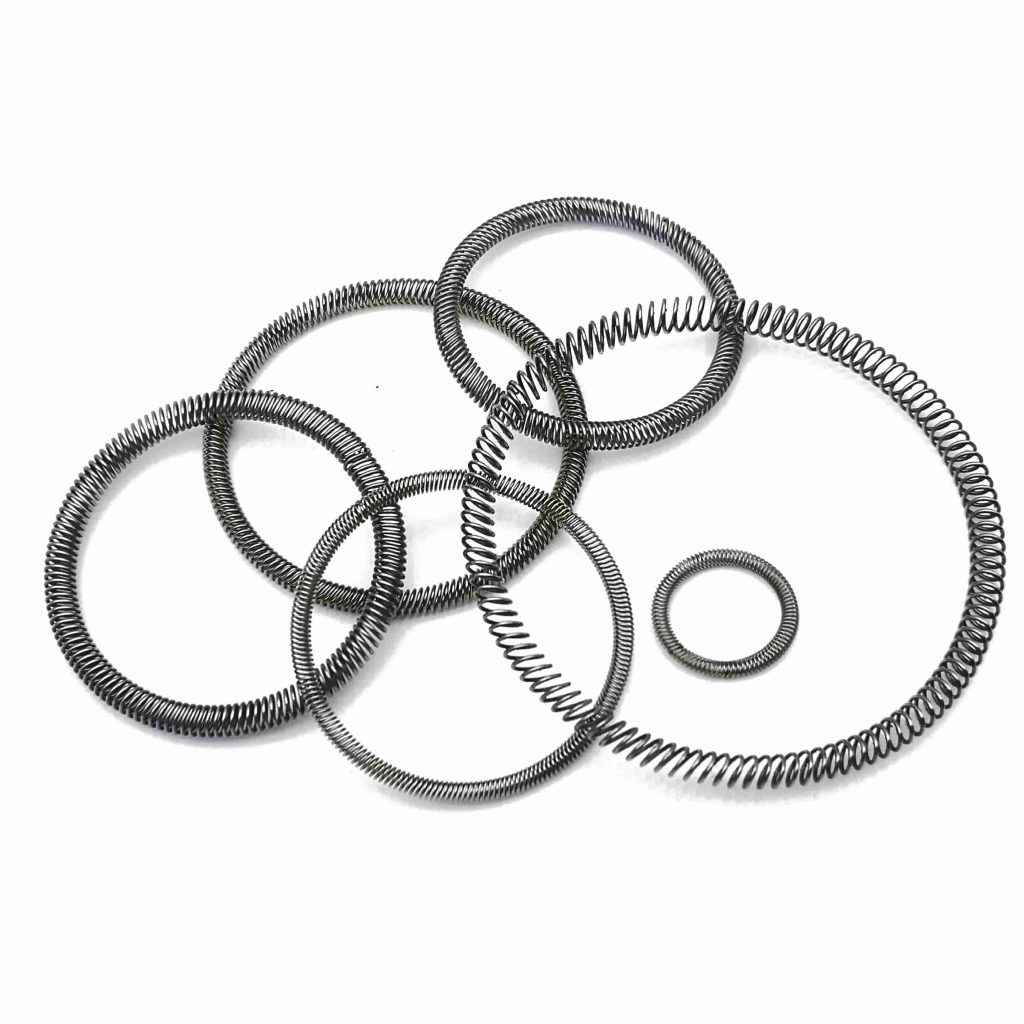
Canted coil seal springs
Canted coil seal springs are specialized components widely used in various industrial applications due to their unique design and functional advantages. These springs are particularly effective in providing a reliable seal under high pressures and extreme conditions. To ensure optimal performance, the materials used to manufacture canted coil seal springs must meet specific requirements. This article will delve into the essential material specifications for canted coil seal springs, including high strength, good plasticity and toughness, excellent surface condition and fatigue performance, strict dimensional accuracy, and good uniformity.
The most crucial requirement for the materials used in canted coil seal springs is high strength. This characteristic is vital for enhancing fatigue failure resistance and relaxation performance. The materials must exhibit a high yield strength-to-elastic limit ratio. The elastic limit is directly proportional to the yield strength; therefore, manufacturers strive to select materials that possess high yield strength.
High strength ensures that the spring can withstand significant loads and stresses during operation without deforming permanently. This property is essential in applications where the springs are subjected to constant or fluctuating loads, ensuring that the springs maintain their shape and functionality over time. Common materials that meet these requirements include high-carbon steel and stainless steel, which offer excellent mechanical properties necessary for demanding applications.
During the manufacturing process of canted coil seal springs, materials undergo various degrees of deformation, necessitating a certain level of plasticity. For instance, when the bending radius is small, the material should not exhibit defects such as cracking or folding during winding or stamping.
Additionally, the springs must possess good toughness to absorb impacts and resist sudden loads effectively. This toughness is crucial for enhancing the lifespan of the springs, especially when subjected to dynamic loading conditions. A material that combines good plasticity with toughness will ensure that the canted coil springs can endure the manufacturing processes and operational demands without failure.

The operational environment of canted coil seal springs often involves high surface stresses, and fatigue failure typically initiates from the surface of the wire. For springs used in critical applications, such as valve canted coil springs or suspension springs, the fatigue life can reach hundreds of thousands of cycles or more. Therefore, the materials must demonstrate exceptional fatigue performance.
Several factors influence the fatigue performance of materials, including chemical composition, hardness, purity of the steel, surface quality, and microstructure. Among these, surface quality is particularly critical, as any imperfections can act as stress concentrators that initiate fatigue cracks. Manufacturers must focus on achieving superior surface finishes and controlling material properties to enhance the fatigue resistance of canted coil seal springs.
Precision in dimensions is another crucial requirement for canted coil seal springs. Many applications, especially in the aerospace and automotive industries, demand stringent load accuracy. For instance, in valve canted coil springs, the load deviation must not exceed 5% of the specified load.
Dimensional accuracy directly affects the performance and reliability of the springs. A small deviation in wire diameter can lead to significant variations in load capacity. For example, a 1% deviation in wire diameter can result in approximately a 4% load deviation. Therefore, manufacturers must adhere to strict dimensional tolerances to ensure that canted coil seal springs perform consistently and reliably across applications.

Uniformity in materials is essential for ensuring consistent performance and quality in canted coil seal springs. The requirements for uniformity pertain to the stability of chemical composition, mechanical properties, and dimensional tolerances. If there are discrepancies in material properties, it can lead to significant challenges during production, resulting in inconsistencies in geometric dimensions, hardness, and load parameters.
Severe non-uniformity can even lead to product waste, as variations in material properties can cause springs to fail to meet specifications. Therefore, manufacturers must emphasize the importance of using high-quality raw materials and maintaining strict quality control measures throughout the production process.
Canted coil seal springs play a critical role in many industrial applications, and the materials used in their manufacture must meet specific requirements to ensure optimal performance. High strength, good plasticity and toughness, excellent surface condition and fatigue performance, strict dimensional accuracy, and good uniformity are all essential characteristics that contribute to the reliability and longevity of these springs.
By understanding and adhering to these material requirements, manufacturers can produce canted coil seal springs that meet the demands of their applications, thereby enhancing operational efficiency and reducing the risk of failure. As industries continue to evolve and demand more advanced sealing solutions, the importance of these material specifications will only grow.